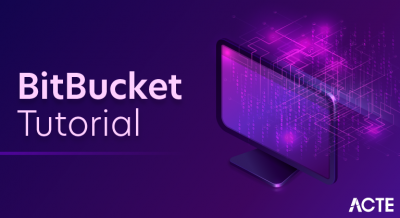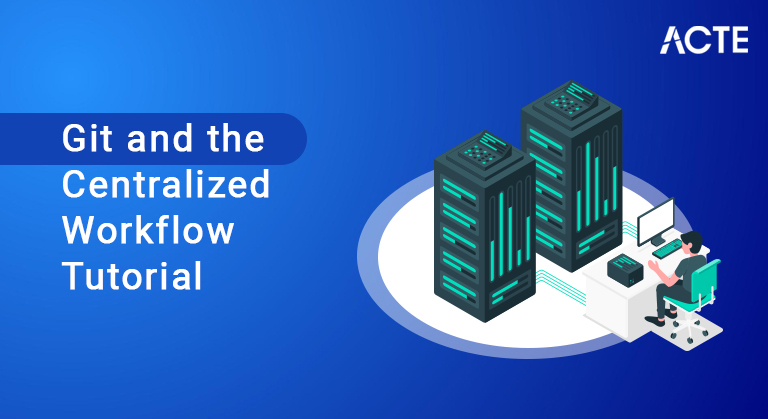
- Introduction to Git and the centralized workflow
- About Git and the centralized workflow
- Initialization of the central repository
- Overseeing clashes
- Model of Git and the centralized workflow
- Other normal work processes
- Gitflow Work process
- Forking Work process
- Brief branches
- Conclusion
- Git is the most ordinarily utilized rendition control framework today. A Git work process is a formula or suggestion for how to utilize Git to achieve work in a steady and useful way. Git work processes support designers and devops groups to use Git viably and reliably. Git offers a great deal of adaptability in how clients oversee changes. Given Git’s emphasis on adaptability, there is no normalized cycle on the best way to communicate with Git.
- When working with a group on a Git-oversaw project, it’s critical to ensure the group is all in settlement on how the progression of changes will be applied. To guarantee the group is in total agreement, a settled upon Git work process ought to be created or chosen. There are a few advanced Git work processes that might be ideal for your group. Here, we will talk about a portion of these Git work process choices
- The variety of potential work processes can make it difficult to tell where to start while executing Git in the work environment. This page gives a beginning stage by reviewing the most widely recognized Git work processes for programming groups.
- As you read through, recollect that these work processes are intended to be rules instead of cementing rules. We need to show you what’s conceivable, so you can blend and match perspectives from various work processes to suit your singular necessities. What is a fruitful Git work process? While assessing a work process for your group, you actually should think about your group’s way of life.
- You need the work process to improve the viability of your group and not be a weight that limits efficiency. A few interesting points while assessing a Git work process are: Does this work process scale with group size? Is it simple to fix missteps and mistakes with this work process? Does this work process force any new pointless mental upward to the group? Unified Work process git work process | Focal and nearby archives
- The Unified Work process is an extraordinary Git work process for groups progressing from SVN. Like Disruption, the Unified Work process utilizes a focal archive to fill in as the single place-of-section for all changes to the undertaking. Rather than trunk, the default improvement branch is called primary and all changes are submitted into this branch.
- This work process doesn’t need some other branches other than primary. Progressing to a dispersed variant control framework might appear to be an overwhelming assignment, yet you don’t need to change your current work process to exploit Git.
- Your group can foster activities in precisely the same manner as they do with Disruption. Notwithstanding, utilizing Git to control your advancement work process presents a couple of benefits over SVN. To begin with, it provides each designer with their own nearby duplicate of the whole venture. This disconnected climate allows every engineer to work
- git clone ssh://user@host/way/to/repo.git
- At the point when you clone an archive, Git naturally adds an alternate way gotten back to beginning that focuses to the “parent” storehouse, under the suspicion that you’ll need to connect with it later.
- git status View the condition of the repo
- git add <;some-file> Stage a record
- git submit Submit a file
- git push beginning fundamental
- This order will push the new dedicated changes to the focal vault.
- In the present circumstance, git pull will initially should be executed.
- This contention situation will be developed in the accompanying segment.
- The focal vault addresses the authority project, so its submit history ought to be treated as sacrosanct and permanent. Assuming that a designer’s neighborhood submits veer from the focal storehouse, Git will won’t push their progressions since this would overwrite official submits.
- Git Work processes: Overseeing clashes
- Before the designer can distribute their element, they need to bring the refreshed focal submits and rebase their progressions on top of them. This resembles saying, “I need to add my progressions to how every other person has effectively treated.” result is an entirely direct history, very much like in conventional SVN work processes.
- In the event that nearby changes straightforwardly struggle with upstream submits, Git will stop the rebasing system and allow you an opportunity to physically resolve the contentions. The decent thing about Git is that it utilizes a similar git status and git add orders for both creating submits and settling blend clashes. This makes it simple for new designers to deal with their own consolidations.
- Furthermore, on the off chance that they find themselves mixed up with inconvenience, Git makes it exceptionally simple to cut short the whole rebase and attempt once more (or go get help).
- John chips away at his element
- Git Work processes: Alter Stage Submit Element Interaction
- In his neighborhood store, John can foster highlights utilizing the standard Git submit process: alter, stage, and submit.
- Mary chips away at her component
- Git Work processes: Alter Stage Submit Element
- In the mean time, Mary is dealing with her own component in her own nearby storehouse utilizing the equivalent alter/stage/submit process. Like John, she doesn’t mind what’s happening in the focal store, and she truly doesn’t really mind how John is treating his nearby archive, since all neighborhood storehouses are private.
- John distributes his element
- Git Work processes: Distribute Element
- When John completes his component, he ought to distribute his nearby focuses on the focal storehouse so other colleagues can get to it. He can do this with the git push order, as so:
- git push beginning fundamental
- Recollect that beginning is the distant association with the focal vault that Git made when John cloned it. The fundamental contention advises Git to attempt to make the beginning’s primary branch resemble his neighborhood principle branch. Since the focal vault hasn’t been refreshed since John cloned it, this won’t bring about any contentions and the push will fill in true to form.
- Mary attempts to distribute her element
- Git Work processes: Push Order Blunder
- We should see what occurs assuming that Mary attempts to push her element after John has effectively distributed his progressions to the focal archive. She can utilize precisely the same push order:
- git push beginning fundamental
- Yet, since her nearby history has wandered from the focal vault, Git will deny the solicitation with a fairly verbose blunder message:
- Mary rebases on top of John’s commit(s)
- Git Work processes: Git Pull Rebase
- Mary can utilize git pull to fuse upstream changes into her vault. This order is similar to svn update-it pulls the whole upstream submit history into Mary’s nearby archive and attempts to coordinate it with her neighborhood submits:
- git pull – – rebase beginning principle
- The – – rebase choice advises Git to move all of Mary’s focuses on the tip of the principle branch subsequent to synchronizing it with the progressions from the focal vault, as displayed underneath:
- Git work processes: Rebasing to Dominate
- The draw would in any case work in the event that you failed to remember this choice, yet you would end up with a pointless “combine submit” each time somebody expected to synchronize with the focal vault. For this work process, it’s better all the time to rebase as opposed to creating a union submit.
- Mary settle a union struggle
- Git Work processes: Rebasing on Submits
- Rebasing works by moving every nearby focus on the refreshed principle branch each in turn. This implies that you get blend clashes on a submit-by-submit premise rather than settling every one of them in one monstrous union submission. This keeps your submits as engaged as could be expected and makes for a perfect undertaking history.
- Struggle (content): Consolidation struggle in <'some-file>
- Git work processes: Compromise
- Unmerged ways:
- (use “git reset HEAD <'some-file>…” to unstage)
- (use “git add/rm <'some-file>…” as proper to check goal)
- both altered: <'some-file>
- git add <'some-file>
- git rebase – – proceed
- git rebase – – cut off
- Mary effectively distributes her component
- Git Work processes:
- Synchronize Focal Repo
- git push beginning fundamental
- Where to go from here
- The Concentrated Work process is basically a structure block for other Git work processes. Most well known Git work processes will have some kind of concentrated repo that singular engineers will move back and forth from.
- Beneath we will momentarily talk about a few other well known Git work processes.
- These drawn out work processes offer more particular examples with respect to overseeing branches for include advancement, hot fixes, and possible delivery.
- Include Fanning is a sensible augmentation of the Unified Work process.
- The center thought behind the Component Branch Work process is that all highlight improvement should occur in a devoted branch rather than the fundamental branch.
- This exemplification makes it simple for a considerable length of time to chip away at a specific component without upsetting the fundamental codebase.
- It likewise implies the fundamental branch ought to never contain broken code, which is a colossal benefit for persistent joining conditions.
- The Forking Work process is generally not the same as different work processes examined in this instructional exercise. Rather than utilizing a solitary server-side archive to go about as the “focal” codebase, it gives each designer a server-side store. This implies that every donor has not one, but rather two Git stores: a private nearby one and a public server-side one.
- There is no one size fits all Git work process. As recently expressed, it’s essential to foster a Git work process that is an efficiency improvement for your group. Notwithstanding group culture, a work process ought to likewise supplement business culture. Git highlights like branches and labels should supplement your business’ delivery plan.
- Assuming your group is utilizing tasks following undertaking the executives programming you might need to utilize branches that compare with assignments in the works. What’s more, a few rules to think about when settling on a work process are:
Introduction to Git and the centralized workflow:
The Concentrated Work process is an incredible Git work process for groups changing from SVN. Like Disruption, the Concentrated Work process utilizes a focal store to fill in as the single mark-of-passage for all changes to the undertaking.
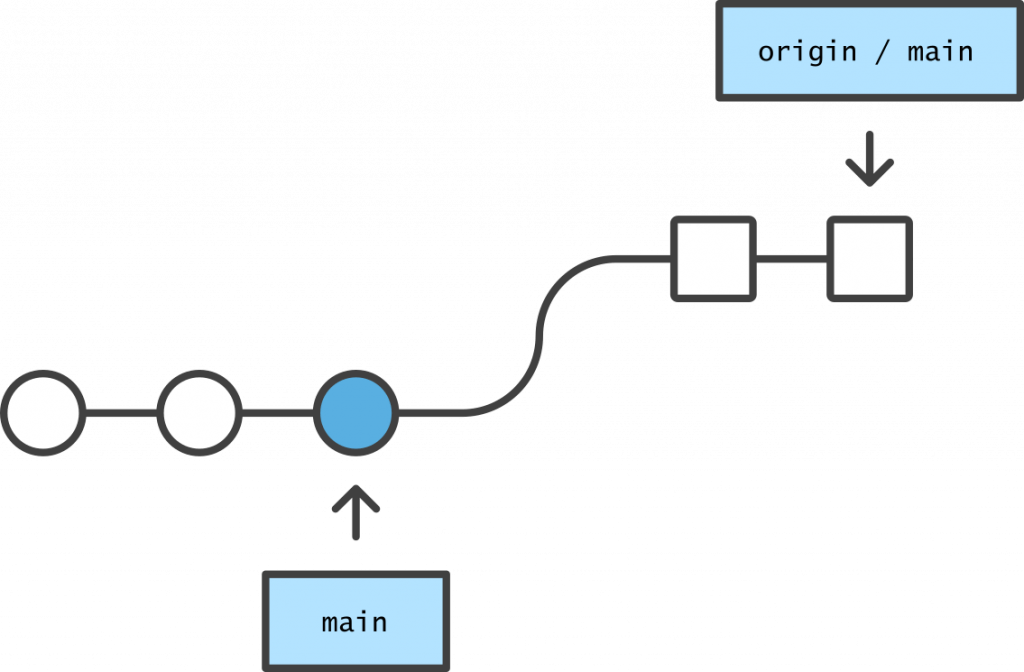
About Git and the centralized workflow:
Initialization of the central repository
Engineers start by cloning the focal vault. In their own neighborhood duplicates of the venture, they alter records and submit changes as they would with SVN; in any case, these new submits are put away locally – they’re totally detached from the focal storehouse.
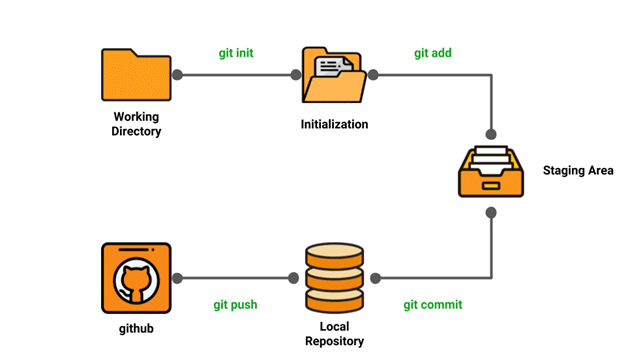
This allows engineers to concede synchronizing upstream until they’re at an advantageous break point. To distribute changes to the authority project, engineers “push” their neighborhood principle branch to the focal storehouse. This is what could be compared to svn submit, then again, actually it adds all of the neighborhood submits that aren’t as of now in the focal primary branch.
Clone the focal vault:
Then, every designer makes a neighborhood duplicate of the whole venture. This is refined through the git clone order:
Make changes and submit:
When the archive is cloned locally, an engineer can make changes utilizing the standard Git submit process: alter, stage, and submit. In the event that you’re curious about the organizing region, it’s a method for setting up a submit without remembering each change for the functioning index. This allows you to make profoundly engaged submits, regardless of whether you’ve made a great deal of nearby changes.
Recall that since these orders make nearby submits, John can rehash this cycle however many occasions as he needs without stressing over what’s happening in the focal store. This can be extremely valuable for enormous elements that should be separated into less complex, more nuclear pieces.
Push new focuses on focal storehouse:
When the nearby archive has new changes submitted. These change should be pushed to impart to different engineers on the venture.
When pushing changes to the focal archive, it is conceivable that updates from another engineer have been recently pushed that contain code which struggle with the planned push refreshes.
Git will yield a message showing this contention.:
Overseeing clashes
Model
How about we take an overall model at how an average little group would team up utilizing this work process. We’ll perceive the way two engineers, John and Mary, can deal with independent highlights and offer their commitments by means of a brought together storehouse.
Recall that since these orders make neighborhood submits, John can rehash this interaction however many occasions as he needs without stressing over what’s happening in the focal storehouse.
Thus, this makes it a lot more straightforward to sort out where bugs were presented and, if important, to reign in changes with negligible effect on the task.
Assuming Mary and John are chipping away at disconnected highlights, it’s far-fetched that the rebasing system will produce clashes. Yet, in the event that it does, Git will stop the rebase at the current submit and result the accompanying message, alongside a few pertinent guidelines:
The extraordinary thing about Git is that anybody can resolve their own union struggles. In our model, Mary would essentially run a git status to see where the issue is. Clashed records will show up in the Unmerged ways segment:
However she would prefer. When she’s content with the outcome, she can arrange the file(s) in the standard style and let git rebase wrap up:
Furthermore it’s just as simple as that. Git will continue on to the following submit and rehash the interaction for some other submits that produce clashes.
Assuming you arrive at this point and acknowledge and you have no clue about what’s happening, don’t freeze. Simply execute the accompanying order and you’ll be right back to where you began:
After she’s finished synchronizing with the focal storehouse, Mary will actually want to distribute her progressions effectively:
As may be obvious, it’s feasible to repeat a conventional Disruption improvement climate utilizing just a modest bunch of Git orders. This is extraordinary for changing groups off of SVN, however it doesn’t use the disseminated idea of Git.
The Concentrated Work process is incredible for little groups. The compromise cycle nitty gritty above can shape a bottleneck as your group scales in size.
In the event that your group is alright with the Brought together Work process yet needs to smooth out its cooperation endeavors, it’s certainly worth investigating the advantages of the Component Branch Work process.
By devoting a disconnected branch to each element, it’s feasible to start top to bottom conversations around new increments prior to coordinating them into the authority project.
Other normal work processes
Gitflow Work process
The Gitflow Work process was first distributed in a profoundly respected 2010 blog entry from Vincent Driessen at nvie.
The Gitflow Work process characterizes a severe spreading model planned around the undertaking discharge. This work process doesn’t add any new ideas or orders past what’s needed for the Component Branch Work process.
All things being equal, it doles out unmistakable jobs to various branches and characterizes how and when they ought to collaborate.
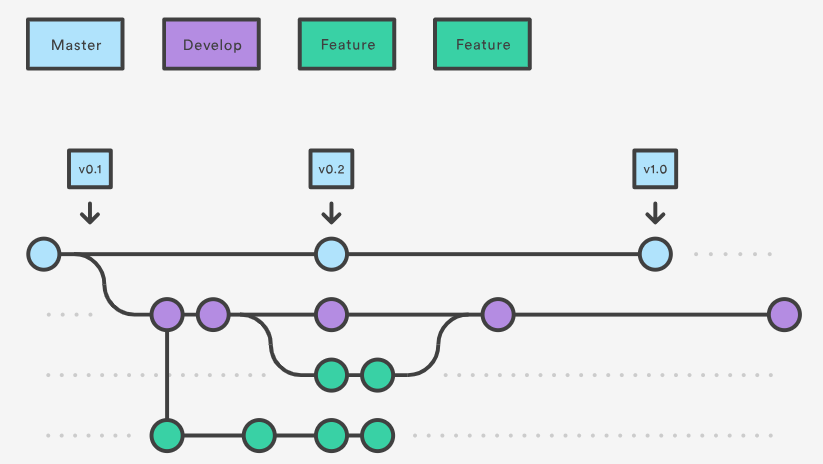
Forking Work process
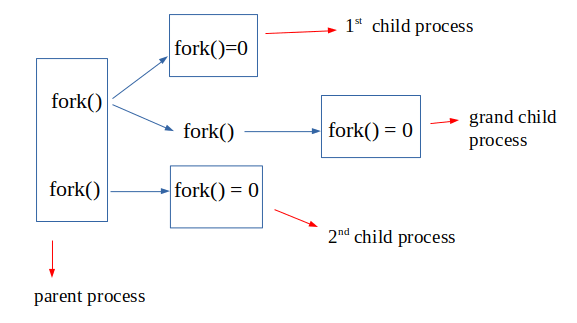
Brief branches
The more extended a branch lives separate from the creation branch, the higher the danger for combined clashes and arrangement challenges. Fleeting branches advance cleaner combines and conveys.
Conclusion:
It’s critical to have a work process that helps proactively forestall consolidates that should be returned. A work process that tests a branch prior to permitting it to be converged into the primary branch is a model. Nonetheless, mishaps do occur. That being said, it’s gainful to have a work process that takes into account simple returns that won’t upset the stream for other colleagues.




